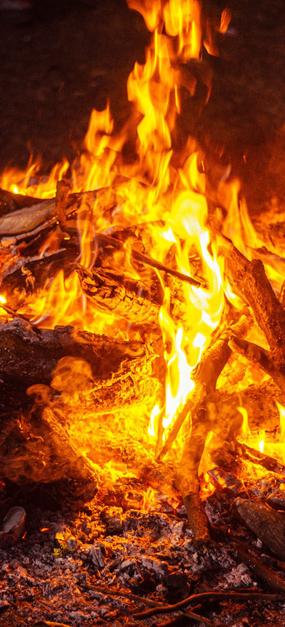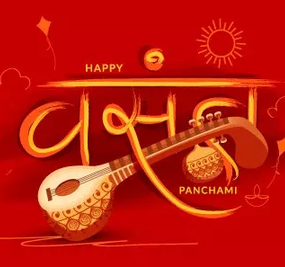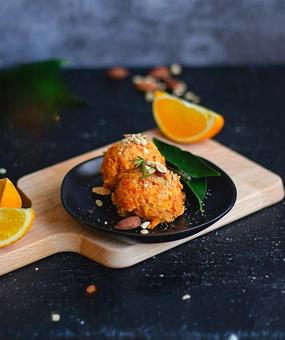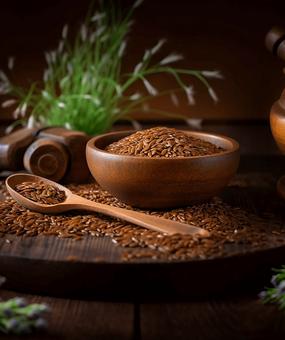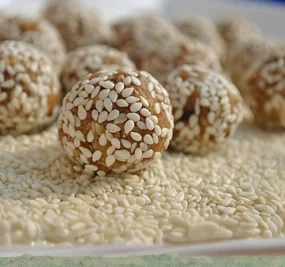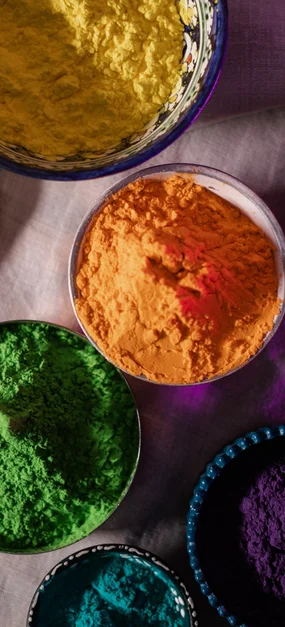Makar Sankranti is an Indian festival celebrated by several states of India around mid-January. Tamil Nadu celebrates Pongal at the same time while Punjab celebrates Lohri at this time. While this is when all the different states celebrate their harvest festivals, true to India’s diverse traditions, each one has its own customs and practices.
When is Makar Sankranti 2025?
January 14th, 2025. This date is based on the solar calendar, and hence, closely follows the Gregorian calendar.
It is the day that the Sun moves into Makara i.e. Capricorn constellation or zodiac.
Who celebrates Makar Sankranti?
This festival is celebrated in Maharashtra, Goa, Karnataka, Andhra Pradesh, Telangana, and Rajasthan. There are variations of this festival across India and around Asia.
| State/Country | Festival |
| West Bengal & North East | Pousha Sankranti |
| Tamil Nadu | Thai Pongal |
| Kerala | Makara Vilakku |
| Assam and North East | Magh Bihu |
| Gujarat | Vasi Uttarayan |
| Punjab | Maghi |
| Nepal | Maaghe Sankrant |
| Thailand | Songkran |
| Cambodia | Mohan Songkran |
Origin and significance of Makar Sankranti: Why Makar Sankranti is celebrated
‘Makara’ means ‘Capricorn’. The movement of the sun into ‘Makara Raashi’ or the ‘zodiac of Capricorn’ is called Makar Sankranti.
- This festival marks the end of the long, cold, winter months and the onset of spring. In ancient times, it was the time when the shift of the sun resulted in longer days. So, it is a celebration of the change of seasons – from a harsher to a milder climate. A sign of hope and positivity.
- This festival is celebrated in honor of Surya (the Sun God) to pay tribute for the grace of his energy that has enabled life and food on earth.
- As it is the harvest festival, it is a time of joy, abundance, and celebration in the farming communities, the time when they reap the fruits of their hard labor.
- It is also a time for peace when families bury the hatchet and get together.
There are twelve Sankrantis in a year. These are twelve days in a year when the Sun moves from one constellation to another. From Makar Sankranti, the Sun starts moving towards the North direction which is also known as Uttarayana. Uttarayana is regarded as the period of Divinity. Although the entire year is considered auspicious, this period is considered slightly more auspicious.
~ Gurudev Sri Sri Ravi Shankar
Legend of Makar Sankranti
In some regions, it is believed that Sankranti is a deity and she killed Sankarasur. The day after, the deity killed another asura (demon) called Kinkarasur. This is why this day is known as Kinkrant.
Since Makar Sankranti is celebrated in different states, there are different traditions in each state. Let’s explore the traditions of five states across India.
1. Maharashtra
Makar Sankranti is celebrated over three days in Maharashtra. People clean their houses, wear new clothes, and invite family and friends to visit them.
Day 1: Bhogi – Maharashtrians pray to the Sun God on this day; they also fly colorful kites together.
Day 2: Married women exchange haldi-kumkum (turmeric powder and vermillion), applying it on each other’s foreheads. They also exchange gifts.
Day 3: Kinkrant – This is the day Devi defeated a demon called Kinkarasur.
You might have heard Maharashtrians say this during Makar Sankranti:
‘Tilgul ghya goad bola’ – in literal translation, it means, ‘Take sweet, talk sweet, be sweet.’
This famous Marathi phrase means, ‘Take this sweet made of til (sesame seeds) and gul/gud (jaggery) and speak sweetly.’ It implies that we should give up our grudges and live harmoniously together. It is a time for forgiveness and togetherness. So, even if there are differences, the festival is a good time to forgive, forget, and move on.
Sesame seed is black on the outside, and white on the inside. The message it gives us is, ‘Maintain purity inside’. If you scrub the sesame seed, it becomes white outside also. We are like a sesame seed with respect to this universe. If you see, what is our significance in this universe, what is life? Next to nothing, like a sesame seed – a mere speck! We are minuscule. We are tiny and sweet; delightful like sesame seeds with jaggery. So, stay small and sweet and you will truly become big. – Gurudev Sri Sri Ravi Shankar
Makar Sankranti food items: Multi-colored halwa, pooran poli (flat bread stuffed with jaggery and gram flour in it, served with pure ghee), and til-gul laddoo (sesame seed and jaggery balls) are the special delicacies prepared on this festival day.
2. Goa
Makar Sankranti is known as Sankrant in Goa.
- Women pray to Goddess Lakshmi Maa (Goddess of Wealth), and observe a 12-day haldi-kumkum (turmeric powder and vermillion) festival, where they apply these sacred powders on each other’s foreheads. They also put flowers on each other’s heads and exchange gifts – usually household items.
- Five leaf plates are offered to God with rice, chana dal (Bengal gram), jaggery, and coconut – one each for the deity and family, two for the crows (believed to be our ancestors); the last one is shown to all the corners of the house to ward off evil spirits. Only the one meant for the family is eaten. The ones meant for the deity and the corners are disposed of.
- This festival ends on Ratha Saptami – the day the temple deity is taken around the village in a rath (chariot). In the end, married women give coconuts, rice, and flowers to the temple.
- Newlywed women offer five clay pots filled with newly-harvested food grains to the temple deity. These pots have black-beaded threads tied around them
- Here, people distribute sugar-coated til sweets. Like their Maharashtrian and Kannadiga counterparts, Goans wish each other, ‘Til gull gheiat, godd uloiat’ meaning, ‘Eat sesame sweets and jaggery, and sweeten your talk.’
Makar Sankranti food items: Delicacies with rice, chana dal (Bengal gram), jaggery, and coconut are prepared on these festival days.
Found these facts fascinating? Equally fascinating are the mind and body. Discover yourself and the secrets of mind management in The Art of Living’s Meditation and Breath Workshop.
3. Karnataka
Makar Sankranti is celebrated in Karnataka with great joy and enthusiasm.
- People clean their houses, decorate the entrance with mango leaves and rangolis (decorative designs made with rice flour), and wear new clothes.
- They exchange ellu-bella (sesame seeds and jaggery) sweets, fried groundnuts, pieces of coconut, sugarcane, and banana, offer haldi and kumkum, and wish each other.
- Kannadigas also wish their near and dear ones the same way their Marathi neighbors do: ‘Ellu Bella tindhu olle mathadu’. It means, ‘Eat the ellu (sesame seeds) and bella (jaggery) sweet, and speak sweet words.’
- Some newlywed women follow a five-year ritual where they give away bananas to other married women. They have to increase the number of bananas they give away each year in multiples of five.
- People also decorate cows and bulls colorfully with beautiful costumes.
- Some communities fly kites as well.
Makar Sankranti food items: Ellu bella (sesame seed and jaggery balls), sweet pongal, payasa (sweet pudding), lemon rice and vadas are part of the sumptuous feast cooked on this day.
It is a wonderful occasion to meet family and friends.
4. Andhra Pradesh and Telangana
Makar Sankranti is celebrated over four days in Andhra Pradesh and Telangana.
- People wear new clothes, thank the Sun God for the year’s harvest, and prepare elaborate feasts on this occasion.
- Elaborate rangoli or muggu or decorative designs are drawn in front of houses with chalk or flour. These are further decorated with flowers and cow dung (particularly in villages).
- Cockfights and bullfights were common sports of this season though they have now been banned.
Day 1: Bhogi Panduga – On this day, people burn old and unrequired articles in a bonfire that they light with old wood and furniture. The idea is to start afresh, ushering in the new.
Day 2: Pedda Panduga – This is the main festival day. People arrange feasts for guests and pay respects to ancestors.
Day 3: Kanuma Panduga – On this day, farmers honor and worship cattle, especially the cow. Girls of the community lovingly decorate and feed them.
Day 4: Mukkanuma – On this day, farmers pay tribute to the natural elements like fire, earth, and rain that enabled the harvest. People also fly kites together.
A unique feature of Sankranti in Andhra Pradesh and Telangana is that haridasus (devotees of Hari or Lord Vishnu) go from house to house singing songs of the Lord.
Makar Sankranti food items: Various savories such as poornalu (sweet made of rice flour covering stuffed with dal and jaggery paste), chakkara pongal (sweet pongal), rice kheer (pudding) and appalu (a sweet made of jaggery and rice flour) are prepared on this special day.
5. Rajasthan
Makar Sankranti is celebrated in Rajasthan with a lot of fervor and excitement. After several months of bitter cold, as the sun shifts toward the Northern Hemisphere, it is time to honor the sun for its bounty and beneficence.
- Some people bathe in holy rivers in spiritual places near their places of residence.
- Women in some communities gift household articles such as food or makeup to other married women.
- Newlyweds are invited by the girl’s parents on the first Sankranti after marriage for a feast called Sankrant Bhoj.
- Like all other states, Rajasthan also has a tradition of kite-flying. In fact, Sankranti is almost synonymous with the kite-flying festival here.
- Families and friends gather on terraces and roofs and fly kites together. Colorful kites of different shapes, sizes, and colors. made of leaves and paper speck the sky.
- Cities such as Jaipur and Jodhpur host kite war competitions wherein people have to cut the kite strings of other kite flyers and bring them down!
- They also fly illuminated kites known as ‘tukals’, which are essentially sky lanterns, at night time.
Makar Sankranti food items: Til laddoos (sesame seed balls), moongphali (peanuts), gajak (sesame seed, peanuts, and jaggery sweet), dal pakodi (fried moong dal snack), and gajar ka halwa (carrot pudding) are some of the delicious snacks made on this day.
Makar Sankranti Celebrations and the Maha Kumbh Mela 2025
Makar Sankranti in 2025 will be a vibrant celebration, coinciding with the auspicious Maha Kumbh Mela at Parayagraj (Uttar Pradesh), which opens on January 13, 2025. This grand spiritual gathering holds immense cultural and religious significance, attracting millions of devotees for holy dips and prayers. The first major bathing date aligns with Makar Sankranti Snan on January 15, 2025, marking the transition of the sun into Capricorn.
As we prepare for these celebrations, it’s time to revive cherished traditions—decorating homes with flowers and rangoli, preparing festive delicacies, flying kites, and gathering with family and friends to exchange warm wishes. The Maha Kumbh Mela adds a spiritual dimension to the festivities, offering an opportunity for purification and renewal.
Important Bathing Dates for Maha Kumbh Mela at Prayagraj 2025
- Paush Purnima: 13 January 2025
- Makar Sankranti: 14 January 2025
- Mauni Amavasya: 29 January 2025
- Basant Panchami: 03 February 2025
- Maghi Purnima: 12 February 2025
- Maha Shivaratri: 26 February 2025
On Makar Sankranti, we exchange sesame seeds & jaggery. The tiny sesame seeds remind us of our insignificance in this vast creation. The feeling that ‘I am nothing’ dissolves the ego & brings humility. Jaggery is a symbol of spreading sweetness. – Gurudev Sri Sri Ravi Shankar
States like Uttarakhand have Uttarayani fairs, where they showcase their cultural songs, dances, and games, and in Madhya Pradesh, people dip in holy waters in Ujjain on this day.
While each state has unique traditions during Makar Sankranti, the spirit with which the festival is celebrated is the same – integration, thoughtfulness, and joyousness. These are apparent in the common customs that are followed – gatherings of family and friends, the spreading of good wishes, and sharing of delicacies.
Here are some delicious Sankranti recipes to feast upon this Sankranti.
You can also read Gurudev Sri Sri Ravi Shankar’s message on the significance of Lohri, Pongal, and Makar Sankranti.



